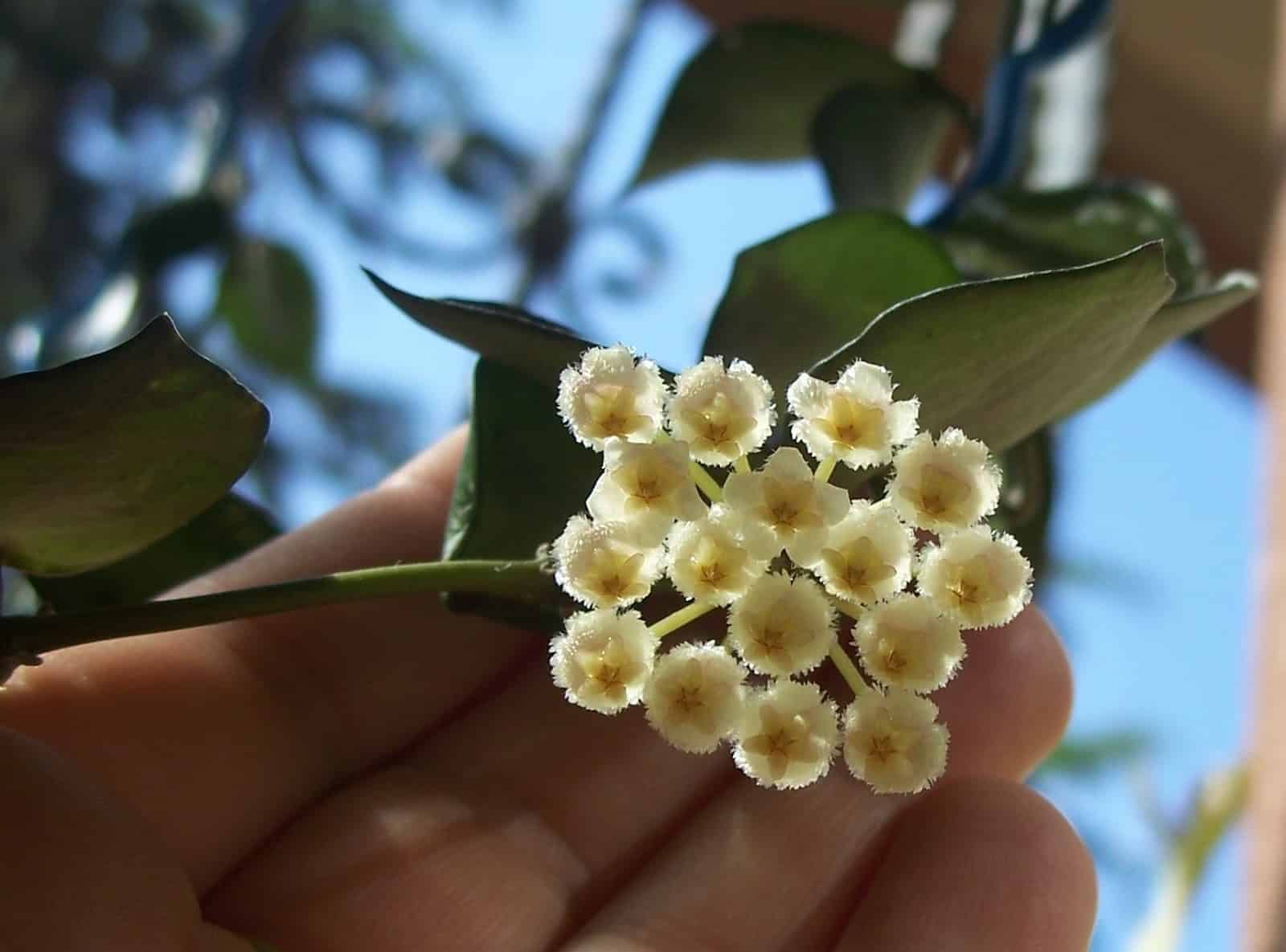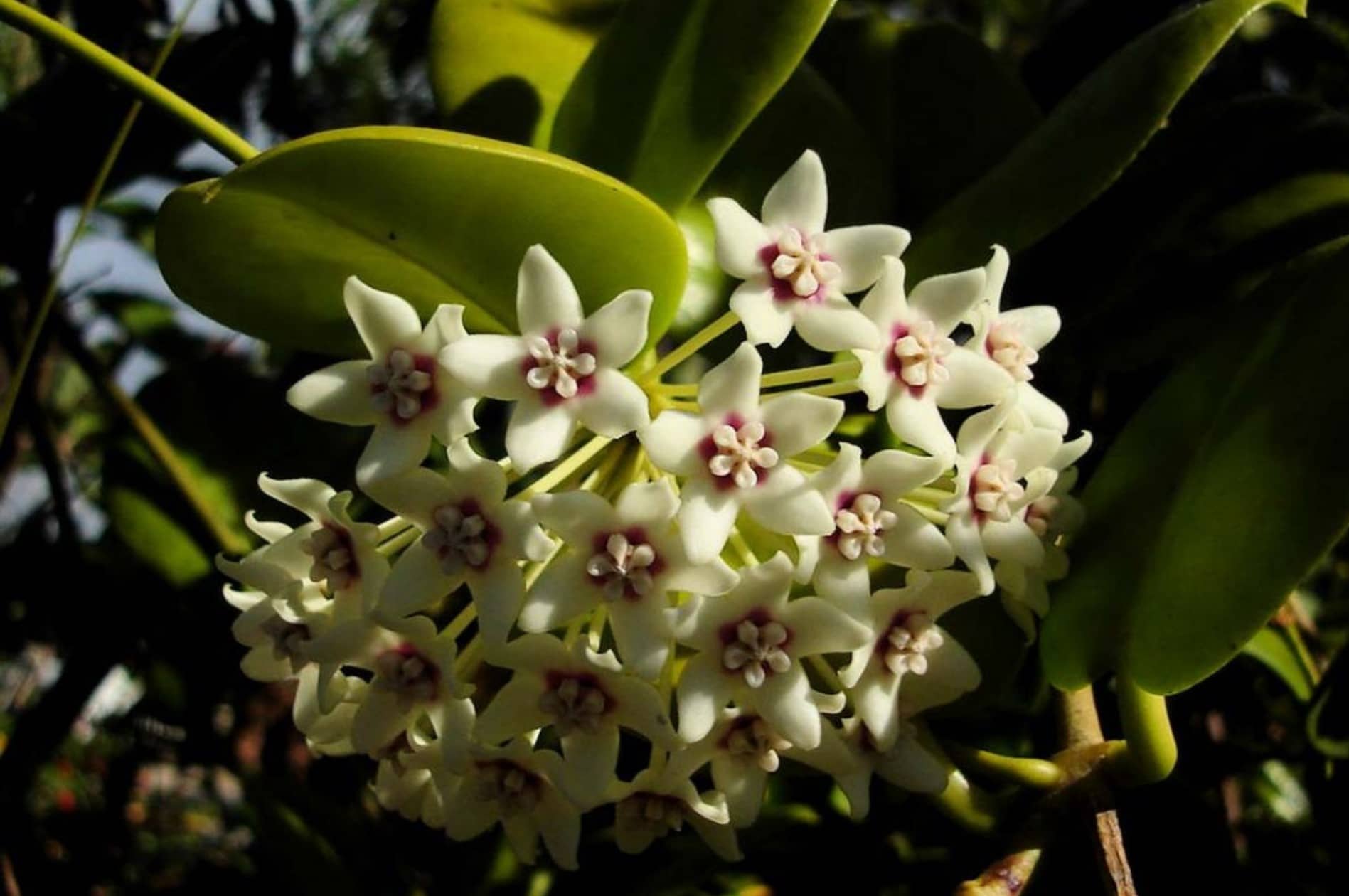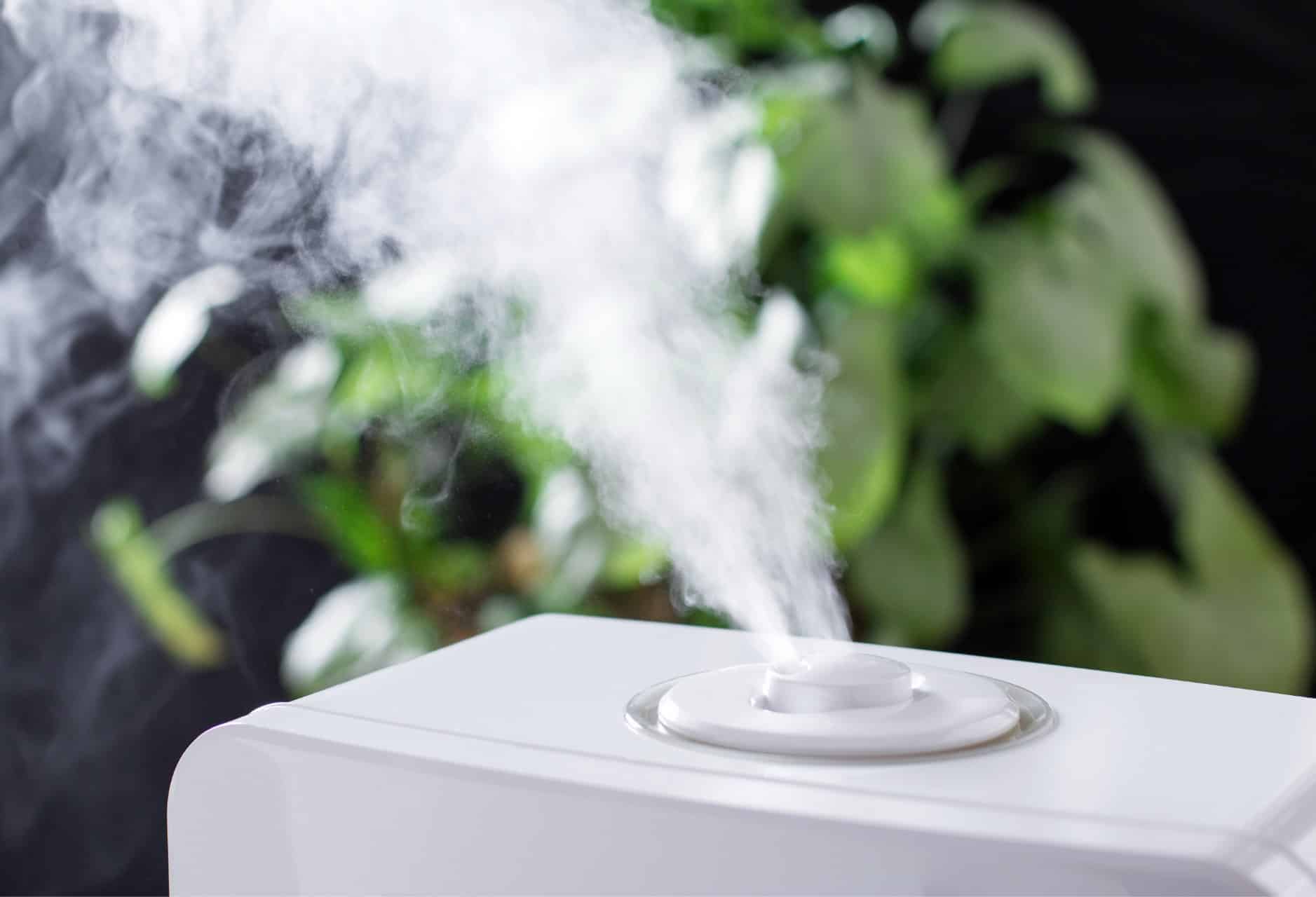No products in the cart.
Okay, before we get to the Hoya krohniana care, we first need to get something out of the way. This plant is not the Hoya lacunosa but is a close cousin with some differences. Still, the tropical plant remains beautiful to add to your houseplant collection.
More About Hoya Plants
According to the University of Florida, you can find hundreds of Hoya varieties growing in Asia. But the Hoya krohniana comes from the Philippines and is the cousin of the Hoya lacunosa.
A fact is that the Hoya krohniana used to be called the heart leaf lacunosa. The Krohniana and Lacunosa plants are climbing varieties and look fabulous in a pendant basket. Both these plants grow at a moderate pace with white fuzzy flower peduncles with a sweet fragrance.
You see a yellow star-shaped pattern in the flower center as if molded with wax when the two plants stand next to each other. The main difference is in the leaves. When you place the two cousins alongside each other, the Hoya krohniana has heart-shaped leaves, while the Hoya lacunosa has oval ones.
Another highlighted difference is that the Krohniana flower is also bigger. You can also find different Krohiana species, from the one we will discuss here with black leaves to two more with silver-type leaves. Still, the care for each of them is the same.
Hoya Krohniana Care

When growing your Hoya krohniana plant indoors, you can successfully grow it in hanging baskets or using a trellis. With a trellis, you can train those long vining stems to climb, making for a beautiful display. So, without further delay, let’s look at the special care to ensure those waxy heart-shaped leaves remain an attraction in your home.
Best Soil For Hoya Krohniana
The best growing medium for your Hoya krohniana is coarse, well-draining soil. As the plants native to the Philippines, it grows on the surface of other plants and trees. So, the succulent-like leaves draw nutrients from the water, air, and debris surrounding them.
We recommend potting soil made up of orchid mix (fir bark, perlite, charcoal) and sphagnum moss for most of the Hoya genus. The peat will hold moisture while the perlite provides drainage for the excess water to drain through the drainage holes.
For epiphytes like your Krohniana, it prefers an acidic to neutral soil.
Suitable Light For Hoya Krohniana

Now that you have a well-draining potting mix, the next is to provide your Krohniana with the proper lighting needs. As the species grow in treetops or under tree canopies, it receives dappled light or indirect light.
We recommend placing your plant indoors in bright indirect light. But we recommend placing your plant about three feet away at an east or west window. Lighting is essential if you want this natural climber to produce flowers.
For outdoor growing, it helps to use a hanging basket you can move in the garden to receive direct light with morning sun and shade in the afternoons. When the seasons change, your Hoya plant needs up to 12 hours of sun exposure daily during winter.
If you do not have enough light indoors, you can use artificial light, like a growing light, to keep those leaves dark green.
Watering Hoya Krohniana
For Hoya krohniana care and finding the proper watering schedule, it all depends on your location and the environment it grows. Even with succulent-like leaves, your plant loves moist soil. Still, not too wet as it can make your healthy plant sick, getting root rot.
Hence, it helps to get the soil mix right and not to hold too much water. Another helpful tip is to do a regular soil surface test to see if the top two inches are dry. Thus, the soil must not be too peaty.
During the growing season in summer with dry periods, you can change your watering to three times a week but always keep checking the soil. When you live in the colder USDA hardiness zones, you can cut down on watering and use lukewarm water.
Where possible, it also helps to collect rainwater when you can to quench your Hoya krohniana thirst.
Hoya Krohniana Fertilizer
Growing your Hoya krohniana in potting soil rich in an organic matter does not need much feeding. For this reason, your plant is a light feeder, and you can use an organic orchid fertilizer bi-monthly in a liquid fertilizer form.
All it does is boost the blooms during the growing months. During winter, you need not feed your plant. Another concern is overfeeding, as it can result in a salt buildup harming the root system.
Temperature and Humidity
For Hoya krohniana care, the temperature must not be too hot or cold. The species is not a hardy plant, and the foliage quickly burns from frost to direct sun. The temperature your plant can handle is 50°F – 77°F (10-25 degrees Celcius.)

Still, if you treat them as outdoor plants and the temperatures drop, we recommend bringing them indoors and placing them in bright light. Another helpful tip is to keep your Hoya plants away from cold drafts from air conditioners and the heat from heaters.
One important thing is to provide your Hoya krohniana with good air circulation and a high humidity between 60% to 80%. Hence, if you need to increase the moisture levels, you can use a humidifier or a pebble tray with water.
During winter, you can mist or sponge regularly your plant indoors but never allow the leaves to remain wet. When the foliage remains wet, it can lead to fungal infections.
Pruning and Maintaining Hoya Krohniana
The Hoya krohniana looks fabulous growing as a pendant plant in hanging planters. The heart leaves display small vines or hangs down. A fact is that you will notice small aerial roots developing along the stem and slow growing.
While you can prune your plant, it helps to be extra careful of the peduncles as they can flower a few times a year. There is also no need to deadhead the flower. Alternatively, you can grow them in small pots; repotting is often unnecessary.
Still, if you see the foliage to roots looking cramped, you can consider transplanting your plant into a new pot. Like the heart leaf Lacunosa, many Hoya prefers a netted container with a liner.
The reason is that you can keep an eye on the roots for fungal diseases and if to root bound. When the time comes to repot, all you do is lift the root ball out and place it in a bigger pot.
Hoya Krohniana Propagation
The fantastic thing is that you can propagate Hoya krohniana regularly using stem cuttings to the aerial roots. You can gift family and friends to spread the Hoya joy with all the cuttings.
propagation hoya stem cuttings
From the mother plant, take a tip cutting in late winter before the growing season starts with a few leaves attached.
Leave at least three nodes and pluck off the other lower leaves.
Then leave the cutting to dry for a day to callous.
Next, take some rooting hormone powder optional and dip the cut end into it.
Prepare a potting mix with good drainage made of 50/50 perlite and peat, and keep it moist.
Place the container in a warm spot in indirect sunlight with humidity and leave until established.
water rooting
Take another cutting from a healthy plant stem tip with two leaves attached and a visible aerial root.
Fill up a tall glass with dechlorinated tap water and drop liquid rooting concentrate in a drop or two.
Place your cutting in the glass and leave it undisturbed in a warm place.
You should notice new thick leaves and roots sprouting within two weeks.
Once the roots are about an inch long, you can transfer them to some potting soil.
air layering
Look at one of the low dangling stems with an aerial root on the parent plant.
Next, lower the stem into the potting soil in the same pot or, if you want, into another container, but it needs to be in the same soil.
Keep the root firm with some hairpins and apply some rooting hormone at the nodes along the stem.
Care for your plant as usual, and you will notice the roots sprouting out of those leaf nodes.
Once the stem establishes itself, you can cut the cord and let it grow by itself.
Hoya Krohiana Varieties
As rare as the Hoya krohniana is, you can find a few varieties available. Most of them have the same texture with looks and those gorgeous waxy heart-shaped leaves with silver markings.
Hoya krohniana Eskimo
The Krohniana Eskimo blooms white flowers growing in clusters while it has silver-streaked pointed leaves. Many plant parents refer to it as the heart leaf Lacunosa.
Hoya krohniana Silver
It is the more dominant silver type of the Hoya krohniana variations and can bloom a few times a year.
Hoya krohniana Black
Compared to the thick leaves in a dark green color, this plant has dark leathery black leaves growing on upright stems.
Common Problems
Your new plant naturally grows in harsh conditions and falls prey to pests and diseases. An insect that tends to bug this plant is mealybugs, and the best treatment is a spray of water to bring them off the plant.
Then, we recommend using insecticidal spray or soap water to treat the infestation. Other attackers are aphids on the foliage or flowers. Another helpful treatment for both bugs is neem oil made into a spray. Also, remember to allow the leaves to dry completely in a well-ventilated spot.
Other concerns are yellowing leaves resulting from overwatering and the best to let the soil dry in between watering. When you notice papery thin, or wrinkling leaves, it is a sign of stress or your plant is thirsty.
If the soil is moist, it can also be root rot, which helps remove your plant to check the roots. Stunted growth can be from too little light or poor soil conditions to a watering schedule. When you notice, leafless vines will eventually produce leaves when they find a suitable light source.
Sometimes the plant might decide that the vine is unnecessary, and you have vines dying back. If you notice a vine shrivel at the tip, you can cut it off.
Frequently Asked Questions
Not all of the Hoya krohniana varieties are rare, but the Krohniana Silver is a rare plant sought after by many plant collectors making it very expensive to buy.
While most Hoya plants are not toxic to pets, they can still make your animal sick. This is because the leaf sap of the plant and the animal’s digestive system cannot break down the toxic substances. The same applies to humans.
The plant has thick leaves with succulent properties and needs the same care as your epiphytic succulents.
The Hoya krohniana depending on the variety you want can find at a local garden center. But you need not travel around town as Plantly has the Hoya collection available for you to buy.
Whether you want to buy, sell, or simply reach out to other plant enthusiasts, Plantly is the right place to be!


